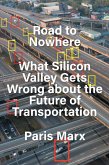Through carefully researched case studies and data from transport authorities worldwide, it illustrates how successful transit systems have transformed urban landscapes and improved community connectivity. The narrative progresses naturally through three main sections, beginning with a fascinating historical account of technological developments, from early omnibuses to electric trams and underground railways.
The middle section tackles present-day challenges in transit systems, including financing structures and accessibility concerns, while the final portion explores exciting innovations in autonomous vehicles and smart transit solutions. Throughout these sections, readers discover how London's pioneering underground system set global standards and how various cities have either succeeded or failed in implementing effective transit networks.
This comprehensive work stands out for its interdisciplinary approach, weaving together urban planning principles, environmental science, and social equity considerations. Written in an accessible style that appeals to both professionals and engaged citizens, the book provides practical frameworks for evaluating transit systems while maintaining academic rigor. It effectively demonstrates how public transportation extends beyond mere mobility to become a fundamental driver of sustainable urban development, supported by extensive data on carbon emission reductions and economic benefits of transit-oriented growth.
Dieser Download kann aus rechtlichen Gründen nur mit Rechnungsadresse in A, B, BG, CY, CZ, D, DK, EW, E, FIN, F, GR, H, IRL, I, LT, L, LR, M, NL, PL, P, R, S, SLO, SK ausgeliefert werden.









